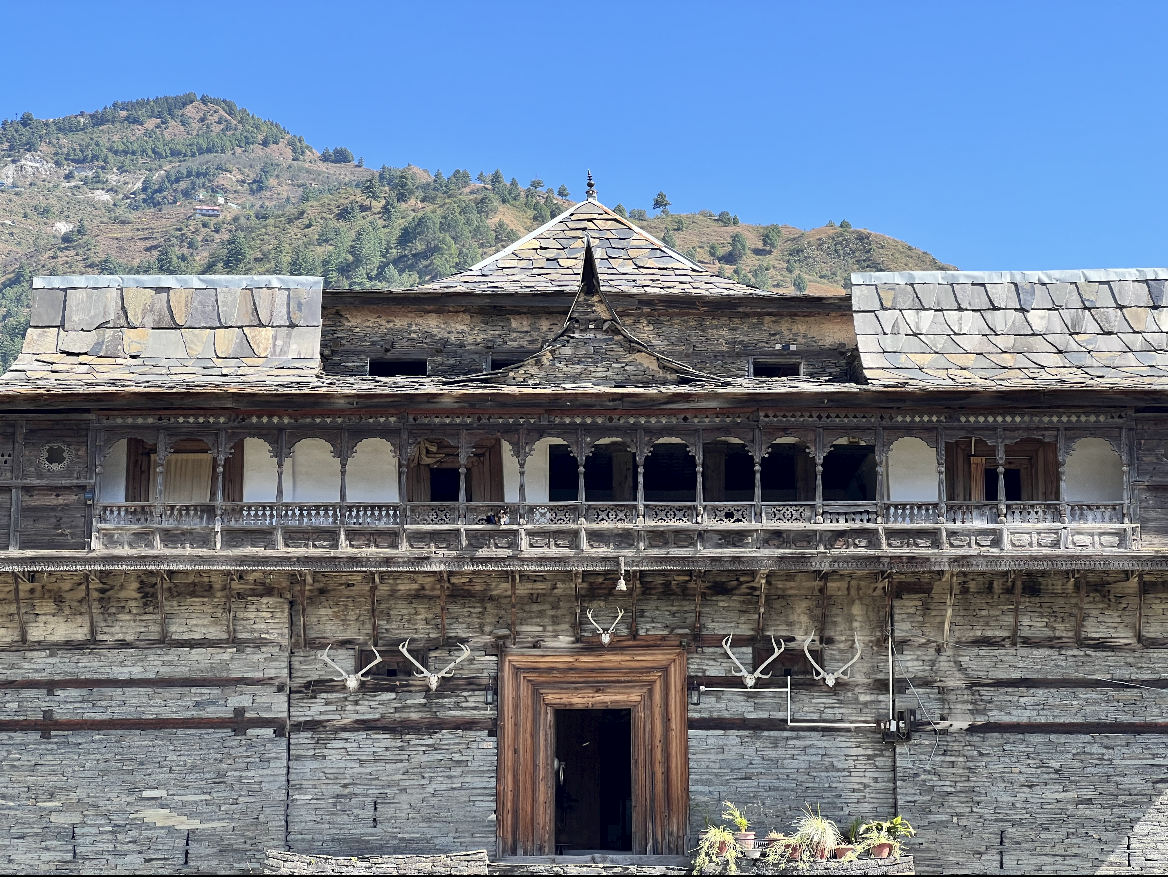Unraveling the Craftsmanship of Kath-Kunni – A Timeless Building Legacy

Unraveling the Craftsmanship of Kath-Kunni – A Timeless Building Legacy
A remarkable example of Pahadi construction can be witnessed in Chehni Village, boasting the tallest kath-kunni structure in the entire Western Himalayas. Despite the challenges of constructing tall structures with stone, the local craftsmen at Chehni have meticulously arranged the stones, and the structure endures even amidst harsh climatic conditions. Situated in a high seismic zone with extreme weather conditions, the kath-kunni structure serves as a solution to both challenges. The thick walls made of stone and wood, coated with mud, act as effective insulation against severe winters. The interlocked wooden beams within the walls provide remarkable ductility, allowing the structure to adjust during earthquakes, dissipating seismic forces without breaking apart. The use of slate tiles for the roof adds weight, enhancing stability.

“As kath kuni architecture and its practitioners fade away, so does a deep knowledge of the mountains and how to live in them”

“Without the forest,
there can be no kath kuni”


The Wonder Plant of the Himalayas: Seabuckthorn
The Wonder Plant of the Himalayas: Seabuckthorn In the arid regions of Ladakh and Lahaul-Spiti, where few major trees thrive, a remarkable shrub stands out

Debunking Common Myths About Honey
Honey has been cherished for centuries, not just as a sweet treat, but also for its numerous health benefits. Despite its long history and widespread

Are we saving the WRONG BEES ?
For years, conventional wisdom, popular slogans, and ad campaigns have heralded the same message: “we need to save the honeybees”. Products from various categories proudly

Savoring Harmony: Tirthan Valley’s Native Honey, Where Conservation Meets Sweet Success
In the serene mountains of Tirthan Valley in Kullu, a unique practice is yielding results that not only promote environmental conservation but also generate a

Brushstrokes of Heritage: Navigating the Enchanting World of Kangra Paintings
यथा सुमेरू: प्रवरो नगानां यथाण्डजानां गरुड: प्रधान:I यथा नराणां प्रवर: क्षितीशस्तथा कलानामिह चित्रकल्प” II ४३:३९ II (Viśṇudharamottara Puraṇa) As Sumeru is the best of mountains,

Buddhi Diwali: A Unique Celebration in the Hills
Did you know that certain regions in Himachal Pradesh observe the festival of Diwali not once, but twice a year? Indeed, this unique celebration takes

